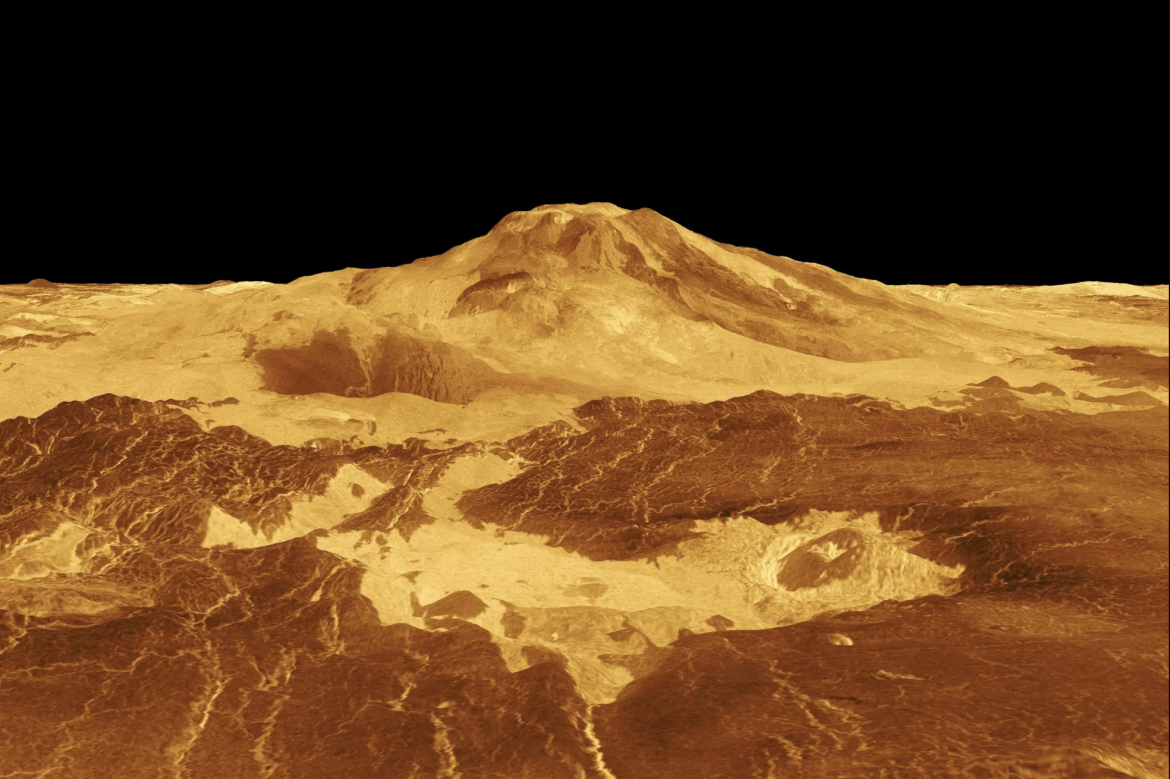
The Dynamic Inner Structure of Venus
Venus, one of our closest neighbours in the Solar System, continues to remain a mystery with its dense atmosphere and harsh conditions that render any spacecraft dysfunctional within minutes. However, planetary scientists have recently made new discoveries regarding its geography, which suggests the existence of at least 85 thousand volcanoes on its surface, and gives us more insight into the evolution and geology of Venus.
In a study published in the Journal of Geophysical Research, researchers inspired by recent discoveries on Venus present a new map they have created that shows every potential volcano on the planet’s surface.
Until recently, experts believed Venus was probably a geologically dead planet without any volcanic eruptions. Scientists have previously identified thousands of volcanoes on Venus, along with coronas which are flat, volcano-like structures covered with solidified lava. The planet’s atmosphere is rich in carbon dioxide and sulphur, which indicated a volcanic past. However, today’s Venus lacks tectonic plates (like those on Earth), which play a key role in volcanic activity and big eruptions. For this reason, scientists assumed that any recent volcanic activity was unlikely on the planet.
Researchers re-examining radar images of the Venusian surface collected by the Magellan Spacecraft between 1990 and 1992, looked for evidence of recent volcanic activity. The data revealed traces of a recent volcanic activity on Venus. Prior to this, another group of researchers, also using Magellan data, had determined that the planet’s outer crust was much thinner and softer than previously noticed –which meant that magma could still reach the surface through the coronas.
Recently, Magellan data was also used to identify a volcano that appears to be active. By looking for changes in the landscape, the researchers were able to determine that Venus was probably still geologically active.
The experts have identified at least 85,000 volcanoes (by comparison, there are 1,350 potentially active volcanoes on Earth) although it is unclear whether they are active, dormant, or geologically dead. That is almost 50 times more than the number counted in past surveys. Almost all volcanoes they found are less than 5 kilometres wide, and they believe there may be others smaller than 1 kilometres wide that are not visible on their maps. Future missions to Venus, including NASA’s VERITAS mission scheduled to launch in December 2027, and the European Space Agency’s EnVision mission scheduled to launch in the early 2030s will possibly provide new images with much higher resolution and help find these potential hidden, mini-volcanoes.
REFERENCES
- 1. https://www.sciencenews.org/article/venus-thousands-volcanoes-map
- 2. https://www.livescience.com/venus-volcano-map
- 3. https://scitechdaily.com/a-fiery-surprise-magellan-spacecraft-uncovers-signs-of-active-volcanism-on-venus/
